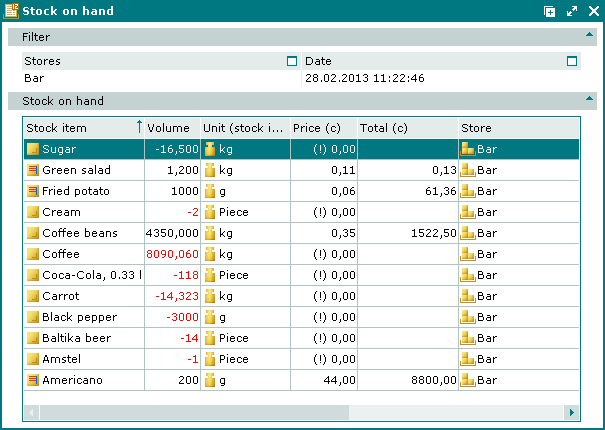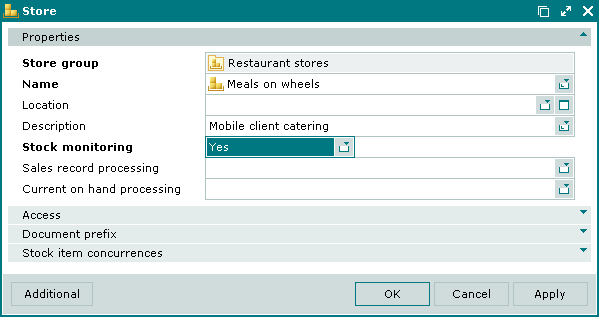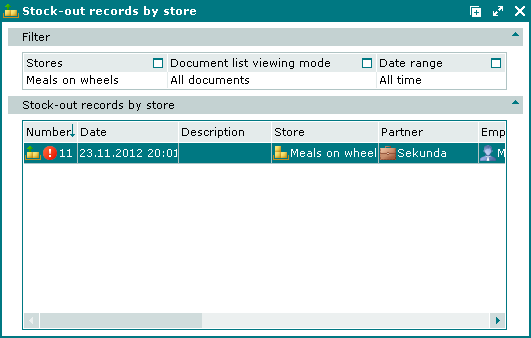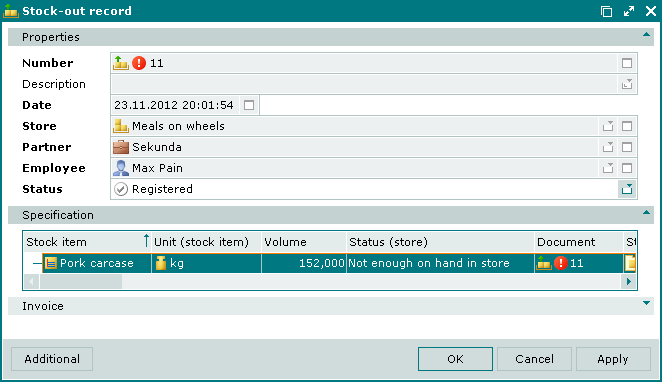When calculating cost prices the Tillypad XL system accounts for only raw stocks. Other fixed and variable costs are not taken into account.
Cost price of received stock items is based on the price specified in a stock-in document: stock-in record or invoice.
Cost price of used stock items is calculated according to FIFO method. This method follows the principle that the usage of a certain stock item is covered by its stocks in the order of their delivery to store starting from the earliest one to the latest.
Cost price of compound stock items (belonging to the With recipe class) is the sum of cost prices of all the ingredients needed for their preparation.
Example 1. How to calculate the cost price of a simple stock item.
The simple stock item Carrots was added to stock using the following documents:
stock-in record dated 2012-09-01 (3.5 kg at the price of 20 RUB was added to stock)
stock adjustment record dated 2012-10-08 (3 kg at the price of 18 RUB was added to stock)
stocktaking record dated 2012-11-01 (7 kg at the price of 22 RUB was added to stock)
Later, the production record dated 2012-11-04 documented the consumption of 5 kg of carrots. To compensate for the consumed amount of carrots, the following stocks were used:
3.5 kg at the price of 20 RUB (refer to the stock-in record dated 2012-09-01; the stock was completely used)
1.5 kg at the price of 18 RUB (refer to the stock adjustment record dated 2012-10-08; the stock was partially used)
As a result, the cost price of 1 kg of Carrots is 19.4 RUB
Once the cost price of the used stock is found, the program will calculate the cost price of stock on hand.
As a result, the cost price of 1 kg of Carrots is 21.24 RUB
Example 2. How to calculate the cost price of a compound stock item
Assume that in order to prepare 1 kg of the Croutons compound stock item we need:
| Recipe item | Volume (kg) | Cost price (RUB) | Total (RUB) |
|---|---|---|---|
|
|
|
|
|
|
|
|
|
|
|
|
|
|
|
| Cost price |
|
As a result, the cost price of 1 kg of Croutons is 150 RUB
The situation can occur when the stock on hand is not enough to cover the usage of the stock items specified in documents. It can be explained by the fact that the stock items were not added to stock, they were incorrectly added to stock or related documents were not run on the store. Then the cost price will be calculated on the basis of an incomplete range of data. The resulting figure will be displayed with the exclamation mark enclosed by parentheses.

Example 3. How to calculate the cost price using incomplete data
The Groceries store received 20 kg of Sugar at the price of 120 RUB. However, only 10 kg was added to the specification of a stock-in record dated 2012-11-01.
Later, 20 kg of Sugar - actually available on store - was moved from Groceries to Kitchen upon the stock movement record dated 2012-11-15.
In view of the fact that the theoretical stock has appeared to be less than the consumed amount of Sugar, its cost price was calculated on the basis of incomplete data and made up at 60 RUB per 1 kg.
As a result, a negative amount of Sugar is displayed in the
operational report. In order to avoid the situation when consumption exceeds stock on-hand, the user can activate stock monitoring.

If stock monitoring is active, such a stock-out document will get the status Execution error after being registered and processed.

The specification item that caused the error will be assigned the status Not enough on hand in store.

© Tillypad 2008-2012